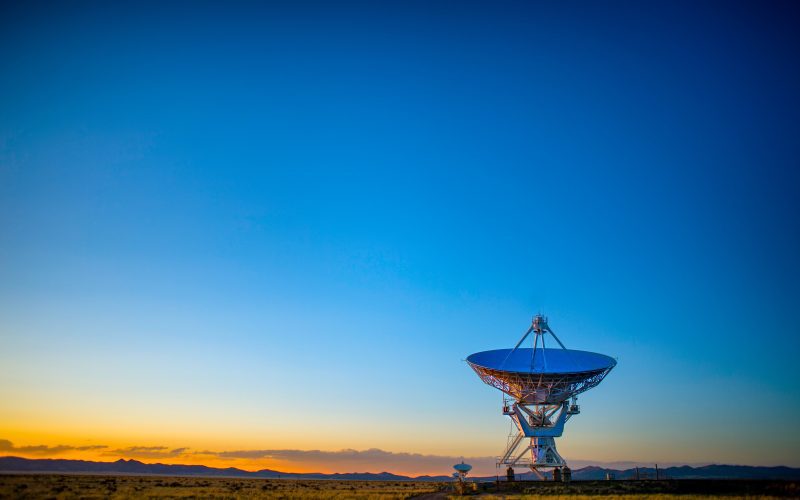Are you tired of experiencing mobile-phone dead zones whenever you’re out and about? Imagine losing signal in the middle of an important call or not being able to access the internet when you need it most. Well, worry no more! The Federal Communications Commission (FCC) has recently recommended using satellite technology as a solution to this problem. In our latest blog post, we’ll explore how this technology works and why it’s the ultimate fix for those frustrating dead zones. So sit back, relax, and let us show you how satellite technology can transform your mobile experience!
The Problem of Mobile-Phone Dead Zones
The average American spends more time on their mobile phone than ever before. But as our dependence on these devices has increased, so have the areas where we can’t get a signal. From large swathes of rural America to small pockets in big cities, “dead zones” are becoming a frustrating reality for many mobile phone users.
The problem is only getting worse as more and more people ditch traditional landlines in favor of cell phones. According to the FCC, about 60 percent of Americans now rely exclusively on wireless service.
And it’s not just calls that are affected. Dead zones can also impede text messages, internet access, and even emergency services. In one tragic case, a woman stranded in her car during a winter storm was unable to call for help because she had no cell service. She eventually died of exposure.
The good news is that the FCC is taking steps to try and alleviate the problem of dead zones. They’ve proposed new rules that would allow satellite technology to be used in areas where terrestrial coverage is lacking.
If implemented, this would be a major boon for rural areas and other places where cell service is spotty at best. It would also help to ensure that everyone has access to reliable mobile service, no matter where they live or travel.
The FCC’s Recommendation: Satellite Technology
The FCC is recommending that mobile phone carriers supplement their terrestrial networks with satellite technology in order to provide coverage in rural and other underserved areas. This would provide a much needed boost to coverage and capacity, particularly in light of the increasing demand for data services.
Satellite technology has a number of advantages that make it well suited for supplementing terrestrial networks. First, satellites can provide coverage in areas where it is not economically feasible to build out a terrestrial network. Second, satellites can provide capacity on demand, which is particularly important during events like natural disasters or sporting events when usage spikes. Third, satellite technology is not as subject to interference as terrestrial networks and can therefore provide a more reliable connection.
There are a few challenges that need to be addressed in order for this recommendation to be successful. First, satellite technology is currently more expensive than terrestrial technology, so there needs to be a way to make it economically feasible for carriers to deploy it. Second, the latency associated with satellite connections can be an issue for some applications. Third, there needs to be a way to seamlessly hand off connections between different types of networks.
Despite these challenges, the FCC believes that satellite technology is the best solution for providing coverage in rural and other underserved areas. With the right policies in place, this recommendation could have a major impact on improving mobile phone service for millions of Americans.
How Satellite Technology Works
Satellite technology has come a long way in recent years, and the FCC is now recommending it as a solution to mobile-phone dead zones. Satellite technology works by sending signals from a ground station to a satellite, which then relays the signal to a mobile phone. The satellite is in constant communication with the ground station, so it can relay signals even when there is no line of sight between the two. This makes satellite technology ideal for areas where there is no cell coverage.
The Pros and Cons of Satellite Technology
Satellite technology has been around for a long time, and it has a lot of advantages. For one thing, it’s very reliable. Once a satellite is in orbit, it can keep working for years with little or no maintenance. And because there are many satellites in orbit, there’s usually at least one in range of any point on Earth.
Another advantage of satellite technology is that it can provide service to remote or hard-to-reach areas. That’s why the FCC is recommending it as a way to improve mobile-phone service in rural areas.
There are some disadvantages to satellite technology, too. One is that it can be expensive to set up and maintain a satellite system. Another is that satellites can be affected by bad weather, which can disrupt service.
Still, the advantages of satellite technology usually outweigh the disadvantages. And as more and more people rely on mobile phones for communication, the demand for better service in rural areas is likely to continue to grow.
Conclusion
The FCC’s recommendation to utilize satellite technology to resolve mobile-phone dead zones is a solution that could be beneficial for both businesses and consumers. With the increased reliability of service, businesses can expect higher customer satisfaction levels as well as improved communication within their own organizations. Consumers can enjoy better coverage in areas where they may have previously been unable to access their devices at all, allowing them to stay connected no matter where they are. With this new technological advancement, everyone stands to benefit from greater connectivity and better service overall.












